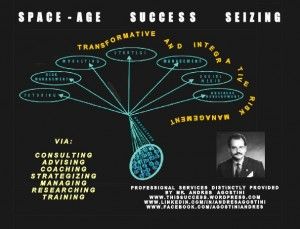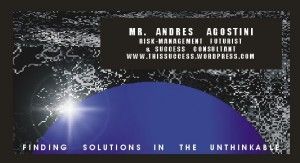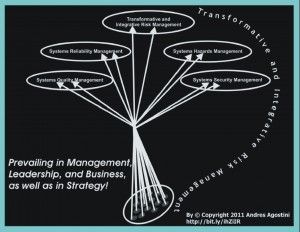FEBRUARY 12/2014 LIST OF UPDATES. By Mr. Andres Agostini at The Future of Scientific Management, Today! At http://lnkd.in/bYP2nDC
X-ray imaging protein molecules at atomic resolution using a graphene cage
http://www.kurzweilai.net/x-ray-imaging-protein-molecules-at…phene-cage
Wearable ‘neurocam’ records scenes when it detects user interest
http://www.kurzweilai.net/wearable-neurocam-records-scenes-w…r-interest
Searching space dust for minute quantities of life’s ingredients
http://www.kurzweilai.net/searching-space-dust-for-minute-qu…ngredients
For landmine detection, Bogota designers think with their feet (1:52)
http://uk.reuters.com/video/2014/02/09/for-landmine-detectio…annel=4000
DHS takes new approach to troubled TECS modernization
http://www.fiercegovernmentit.com/story/dhs-takes-new-approa…z2svhTZcHz
Scientists develop potential new drug treatment to tackle viruses
http://phys.org/news/2014-02-scientists-potential-drug-treatment-tackle.html
Nanotechnology researchers control artificial nanomotors inside living cells
http://www.nanowerk.com/nanotechnology_news/newsid=34335.php…gy+News%29
Humans Teaching Machine Learning
http://www.adallom.com/blog/humans-teaching-machine-learning/
Pentagon vexed by inability to solve ethics lapses
http://www.politico.com/story/2014/02/pentagon-scandals-mili…03302.html
New programming language removes human error from privacy equation
https://www.csail.mit.edu/node/2166
Caltech: secrets of the world’s number one university
http://www.timeshighereducation.co.uk/features/caltech-secre…ullarticle
Optogenetic toolkit goes multicolor. New light-sensitive proteins allow scientists to study how multiple sets of neurons interact with each other
http://web.mit.edu/newsoffice/2014/optogenetic-toolkit-goes-multicolor-0209.html
Why Do Nerds Become Successful CEOs?
http://www.forbes.com/sites/quickerbettertech/2014/02/10/why…sful-ceos/
The government drone is on its way: UAE plans to use biometric quadcopters for ID card delivery
http://gigaom.com/2014/02/10/the-government-drone-is-on-its-…-delivery/
Alibaba offers to buy digital mapping company AutoNavi
http://www.reuters.com/article/2014/02/10/us-autonavi-offer-…vrit=59213
H7N9 vaccine proves effective on lab mice
http://news.xinhuanet.com/english/video/2014-02/09/c_133101225.htm
Reinventing Social Media: Deep Learning, Predictive Marketing, And Image Recognition Will Change Everything
http://www.businessinsider.com/social-medias-big-data-future…2014-2
World’s First Entanglement-Enhanced Microscope
http://www.technologyreview.com/view/524521/worlds-first-ent…ce=twitter
Conserved nuclear envelope protein uses a shuttle service to travel between job sites
http://phys.org/news/2014-02-nuclear-envelope-protein-shuttle-job.html
From Gadgets To Galaxies: Conference Reports
http://www.scientificamerican.com/podcast/episode/from-gadge…um=twitter
Zero-sum politics
http://www.economist.com/news/united-states/21595973-voters-…umpolitics
Striking Photos Go Deep Inside the European Space Program
http://www.wired.com/rawfile/2014/02/european-space-agency-e…-id-139871
Tech innovation vs. the surveillance state: How it’s playing out in Washington
http://www.techrepublic.com/article/tech-innovation-vs-the-s…ashington/
CHART OF THE DAY: Europe’s Share Of Global Profits Is At A 28-Year Low
http://www.businessinsider.com/europes-share-of-msci-world-earnings-2014-2
Bitcoin Bug Prompts Pricing Freefall
http://mashable.com/2014/02/10/bitcoin-bug-prompts-pricing-f…-main-link
Administration weighs drone strike against American citizen
http://thehill.com/blogs/defcon-hill/policy-strategy/197898-…ng-with-al
We’re about to get a new composites manufacturing robot, engineers tell
We’re about to get a new composites manufacturing robot, engineers tell @MarkWarner. pic.twitter.com/EwdehU5OVD
— NASA Langley Research Center (@NASA_Langley) February 10, 2014
Design and strategy in organic synthesis
http://www.rsc.org/chemistryworld/2014/02/design-strategy-or…oux-merner
10 things not to buy in 2014
http://www.marketwatch.com/story/10-things-not-to-buy-in-201…nk=sfmw_sm
Worried sick: What’s up with today’s rampant anxiety?
http://www.newscientist.com/article/mg22129550.800-worried-s…AL-twitter
Why Traffic To These Google Alternatives Is Soaring
http://www.forbes.com/sites/adamtanner/2014/02/10/why-traffi…um=twitter
How We Created a Network of STEM Teachers
http://www.edweek.org/ew/articles/2014/02/05/20gillespie.h33…clp-edweek
An Austrian Artist Has Completely Reinvented The Door
http://www.businessinsider.com/klemens-torgglers-kinectic-door-2014-2
Dyson’s vision for future robots
http://news.uk.msn.com/uk/dysons-vision-for-future-robots
Terrific Tech: 10 Futuristic Advances in Robotics
3D-printed hip implant lets teenager walk again
http://www.gizmag.com/3d-printed-hip-implant/30763/
3D-printed pizza – a quick and easy meal for astronauts?
http://www.gizmag.com/3d-printed-pizza-astronauts/30685/
The Year Man Becomes Immortal
http://content.time.com/time/interactive/0,31813,2048601,00.html
Do You Trust Internet-Connected Appliances Enough To Let Them Run Your Home?
http://www.forbes.com/sites/tarunwadhwa/2014/01/23/do-you-tr…your-home/
US Lead in Science And Technology Shrinking
http://www.sciencenewsline.com/summary/2014020622520037.html
New Blood Pressure Tracking Device Works with Smartphone
Gizmos & Gadgets: New Blood Pressure Tracking Device Works with Smartphone
New Journal Article Sheds Light on Past Earth Warming Events
Headlines: New Journal Article Sheds Light on Past Earth Warming Events
“More than 93 percent of the warming of the planet since 1970 is found in the ocean”
Headlines: “More than 93 percent of the warming of the planet since 1970 is found in the ocean”
U.S. Agencies Take Significant Step Toward Wirelessly Connecting Vehicles To One Another
http://singularityhub.com/2014/02/05/u-s-agencies-take-signi…e-another/
5 most incredible discoveries of the week
http://www.usatoday.com/story/tech/2014/02/08/newser-incredi…s/5312059/
‘Natural cities’ emerge from location-based social media
http://www.impactlab.net/2014/02/08/natural-cities-emerge-fr…ial-media/
The real promise of big data: It’s changing the whole way humans will solve problems
http://venturebeat.com/2014/02/09/the-real-promise-of-big-da…-problems/
Text, Chat, Profit: Tencent Launches Investing on WeChat
http://blogs.wsj.com/chinarealtime/2014/01/22/text-chat-prof…on-wechat/
The CEO’s Perfect Storm: Demographics, Data, and Devices Change Everything
http://www.linkedin.com/today/post/article/20140210140304…everything
Is Amazon entering the mobile payment war?
http://www.brickmeetsclick.com/is-amazon-entering-the-mobile-payment-war–
Digital health partnership marries clinical and sensor data for more proactive senior care
Digital health partnership marries clinical and sensor data for more proactive senior care
Chips Break Sales Record in 2013
http://www.eetimes.com/document.asp?doc_id=1320876
QUOTATION(S): “…We won’t just experience 100 years of progress in the twenty-first century ─ it will be more like 20,000 years of progress…”
CITATION(S): “…If it seems like your world has been topsy-turvy over the past few years … Consider what’s coming. Your genetic code will be imprinted on and ID card … For better and worse. Medicines will be tailored to your genes and will help prevent specific diseases for which you may be at risk. (But … your insurance company and your prospective employer may also find out that you are genetically disposed to, say, heart disease, or breast cancer, or Alzheimer’s.)…” AND “…The lesson of the last three decades is that nobody can drive to the future on cruise control…”
BOOK(S): Present Shock: When Everything Happens Now by Douglas Rushkoff. ISBN-13: 978–1591844761
Regards,
Mr. Andres Agostini
Risk-Management Futurist
and Success Consultant
http://lnkd.in/bYP2nDC



